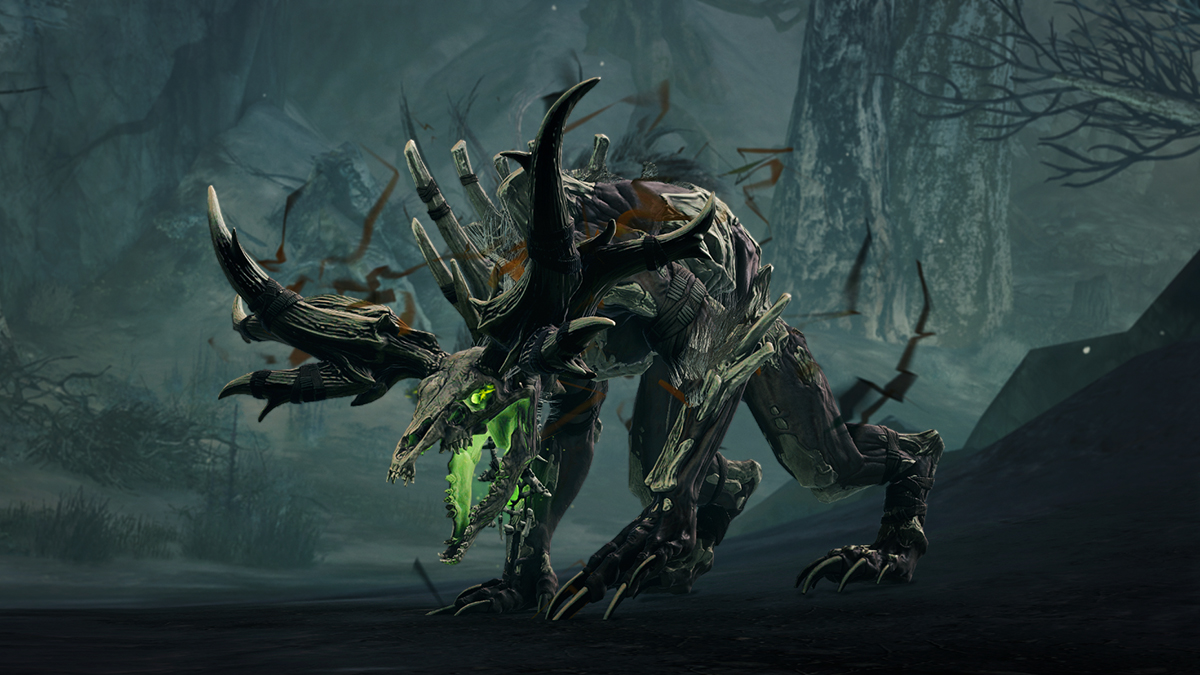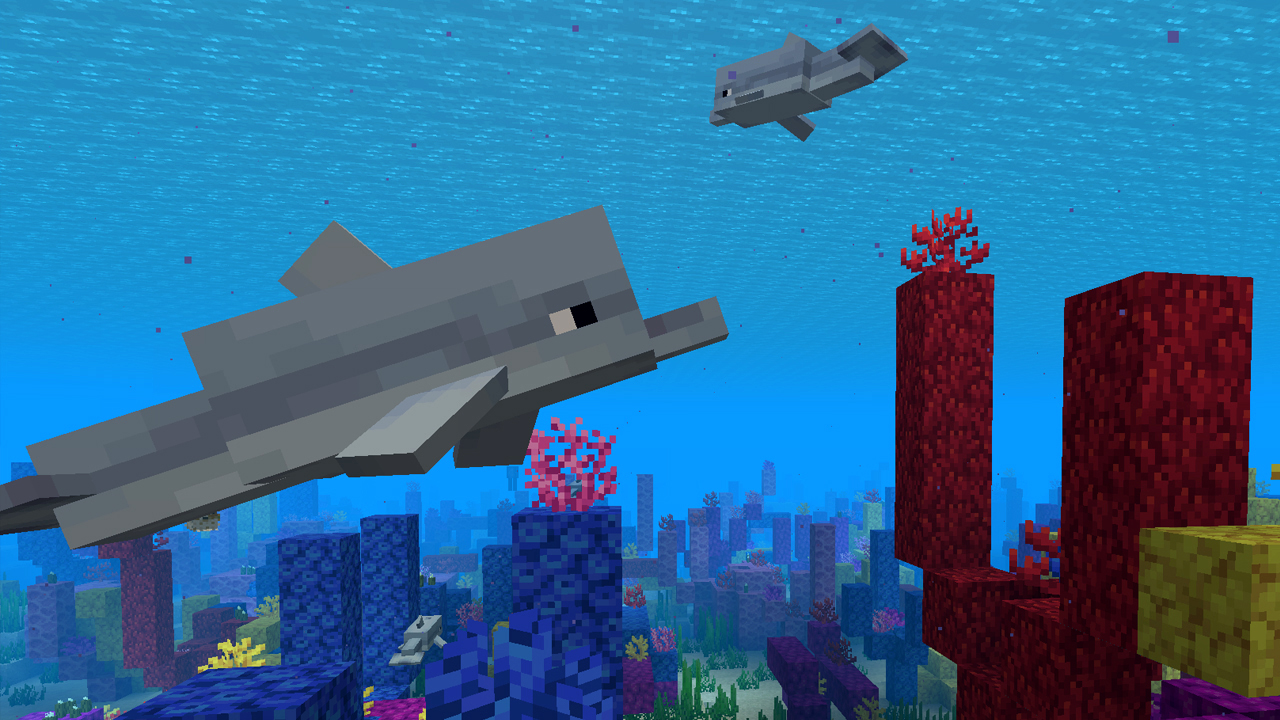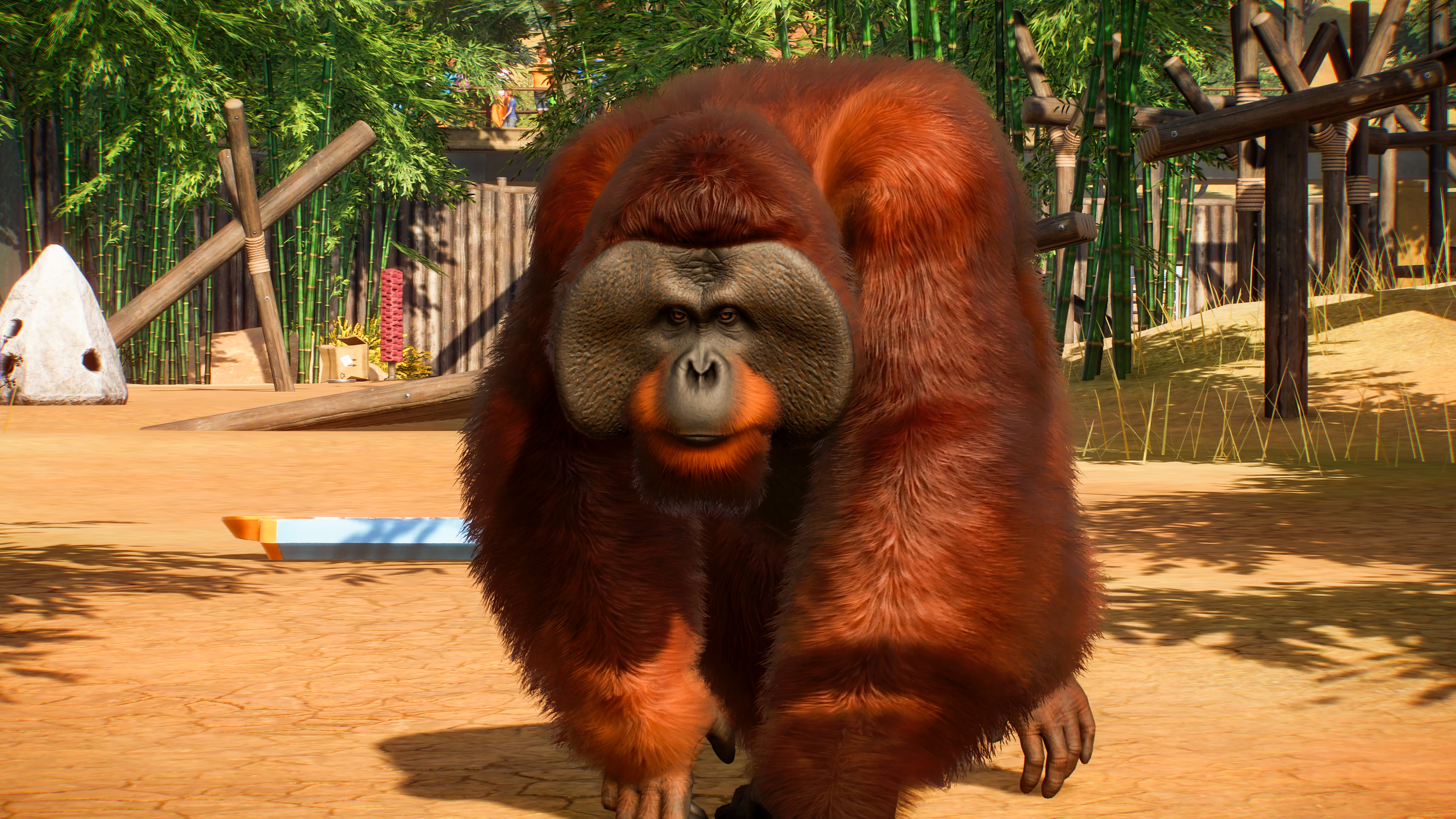From kazoos to trash cans, how animal sounds are made in games
Audio engineers share their silliest sound stand-ins and the surprising challenges of using real animal sounds in today's games.

"A creature sound can come from anywhere, really," says ArenaNet senior sound designer Joseph Clark. As game worlds grow in size and density, so do the number and variety of animals and monsters within them. We don't tend to stop and think about where the sounds for those animals come from, but their origins are even more varied. Sure, sometimes a digital bear is actually a bear, but sometimes a monster is also, secretly, a trash can.
"Friction is one of our best friends for sound design," Clark says. One of Clark's go-tos, when he's looking for a particularly hair-raising sound, is a rubber band scraped along a djembe drum. It makes a horrible screeching noise. On one particular occasion, one of his co-workers was dragging a trash can from their office to the hall and noticed that it made a "great purring, guttural sound."
Minecraft's animals were originally voiced by a kazoo, of all things
In moments like that, Clark's ears perk up, and he knows it's time to grab the microphone.
We're taking a minute to stop and really listen to how animals sound in games, as told by the sound designers who give them voices. Designers from teams large and small talk about the challenges recording real animals, how to "fake" an animal with clever use of other objects, and why you definitely should not go around poking bears.
Animal acting
When recording any Foley—using objects to mimic other natural sounds—but definitely with animals, having your ears "on" at all times is important for a sound designer. Everyday sounds can often become the voices of videogame creatures with a bit of editing after the fact. Clark shared a video for one in Guild Wars 2 that involved using an electric toothbrush on a cardboard box. After lowering the pitch and layering in a bicycle chain and other sounds, it became the spooky chittering purr of Guild Wars 2's boneskinnner.
You never know where your next creature sound is going to come from. In this case, an electric toothbrush with low battery. 🤔#sounddesign #foley #gameaudio #creaturesound #arenanet #GuildWars2 #gw2 #boneskinner pic.twitter.com/EM0jBrxUckNovember 23, 2019
Even ordinary animals can have their parts played by odd objects. Minecraft's animals have had a tune-up since the game's earliest days, but Mojang's audio director Samuel Åberg says they were originally voiced by a kazoo, of all things.
Humans can play the part of monsters and animals as well if you know what kind of sounds you need. "For one of the scariest mobs in [Minecraft], the Phantom, I used a heavily processed recording of my screaming 6 month-old son," Åberg says. "He was having trouble falling asleep, and the insomnia monster that is the Phantom just seemed esoterically fitting.
Keep up to date with the most important stories and the best deals, as picked by the PC Gamer team.
Creative use of Foley recording is immensely important as recording live animals can be challenging. For Minecraft's newer mobs, Åberg says that Mojang tries to record actual animals where possible but going to the source presents its own difficulties. Mojang recorded dolphins for the sounds of the in-game mammals but it's easy to imagine the difficulties that presented.

"To even be able to hear some of the dolphin’s sounds, we had to use special equipment," Åberg says. "Underwater microphones, called hydrophones, and a “click detector,” which translates the dolphins’ high-frequency clicks to audible levels."
Even for animals that don't live in the ocean, getting a microphone in front of their furry faces won't always produce needed results. "Animals as a rule of thumb are often fairly quiet and generally only vocalise if something is happening, for example when they feel threatened or during mating rituals," says Planet Zoo's senior audio Designer Pablo Canas.
For Planet Zoo's team, the gorilla was a particular problem area. "We found audio for the gorilla to be quite elusive due to their quiet nature. This made them tricky to record," Canas says.
Using real animals can present ethical problems in addition to the logistical, points out Hinterland Studio's audio director Glenn Jamison. The Long Dark's animals are almost always a threat to the player. Bears roar and wolves growl or howl. Getting a live animal to make the sounds you need isn't easy. "Getting a dog to growl playfully doesn't sound the same," Jamison says. "You'd need that animal to actually be angry, and that's not easy to do without upsetting the animal."
"Animals are going to do what they want," agrees Clark. "I'm not gonna like, poke a bear or something."

The editing lab
The breaths of the tortoise, for example, is the sound of breathing through a hose
Planet Zoo's Ben Scholey
When kids and kazoos won't do the trick and hauling equipment out to record an animal live just isn't feasible, sound designers often turn to libraries of sounds recorded and provided by others. "Due to the falling cost of high-end recording equipment and the advent of crowdfunding, many independent sound designers and recordists have been able to create and publish a wealth of incredible libraries," Canas says. Those libraries were particularly useful for Frontier Developments when it needed sounds for Planet Zoo's 80 species.
Sound libraries help sound designers sidestep the challenges of going out in the field but also add an extra layer of technical difficulty. Not all recordings are created equal, of course. "The challenges with using sfx libraries are mostly to do with getting a consistent sound and quality," says Jamison.
"The bear was probably the hardest animal to make sound believable. Library recordings are limited and there's often a lot of background noise you're dealing with," he explains. The Long Dark's intimidating grizzly bear needed lots of different sounds to sell its presence in the Canadian wilderness.
"What I do initially is collect everything I can, start chopping it up, and I put things into various folders with names like: Angry, sad, idling, eating, roars, curious etc," Jamison says. It's a process of cutting up existing clips from libraries he had access to and grabbing just what he needed. After that, he had to lay out all the puzzle pieces and take stock. "I listen to each one and decide what emotion that vocalization fits best, and I try to match that up with bear states we have in the game," he says.
Planet Zoo's animals were difficult to design in part due to the perspective of the game itself. As a management game, you have the godlike ability to observe your animal friends up close and personal. The problem is, many real recordings for those animals are taken from a distance. Bringing animals closer to a player's ear using a distantly recorded source involved some expert sound editing.
"A good example of this was the orangutan, as they have a call that they produce on top of trees known as a 'long call hoot,'" Canas explains. "All the recordings we found were mid-far perspective and as soon as we implemented them, they felt disconnected when experienced from a close perspective in game. To combat this, we had to use [Izotope RX] in a very surgical way to remove that distance between the mic and the orangutan, mainly using de-reverb and adding in more low end content," he says.
Another trick that Planet Zoo's team employed was playing up some of the smaller sounds that animals make: Little grunts, breaths, and other things you would likely never be close enough to hear. "Ironically, this makes them sound more realistic as this is what the player would expect," says audio designer Ben Scholey.
In these instances, human sounds can fill in the gaps that sound libraries can't. "The breaths of the tortoise, for example, is the sound of breathing through a hose, and some of the juvenile big cat grunts were a fellow human being in the recording booth."
Scholey said that one of the more surprising animal sounds he got to work with in Planet Zoo were the odd vocalizations of cheetahs. "Unlike other big cats, they are unable to roar due to the lack of a hyoid bone in their throats. It was possibly my favourite animal to work on due to their unusual calls and their lovely chirps can be heard park-wide," he says.
My own favorite animal got a shoutout as well. "Another animal which surprised me was the polar bear which purrs when content. It was great to show off this subtle softer side of these huge creatures," Scholey adds.

Sometimes animals even serve as voice actors for other animals, like a pug named Gyoza starring in Halo Infinite, or French bulldog Louie playing raptidons in The Outer Worlds. Giant spiders, thankfully, aren't actually giant spiders, and sometimes just sticking a donut in your own mouth can do the trick.
Creating the diverse cast of animals in every game involves more ingenuity and an array of tools than you might imagine. While it can be eye-opening to get up close and personal with dolphins and primates, not every team has the ability to get out in the field. Even if they stay home, finding the right voice for a game's creatures involves a lot of technical skills and a fair bit of artistry as well.

Lauren has been writing for PC Gamer since she went hunting for the cryptid Dark Souls fashion police in 2017. She accepted her role as Associate Editor in 2021, now serving as self-appointed chief cozy games and farmlife sim enjoyer. Her career originally began in game development and she remains fascinated by how games tick in the modding and speedrunning scenes. She likes long fantasy books, longer RPGs, can't stop playing co-op survival crafting games, and has spent a number of hours she refuses to count building houses in The Sims games for over 20 years.

